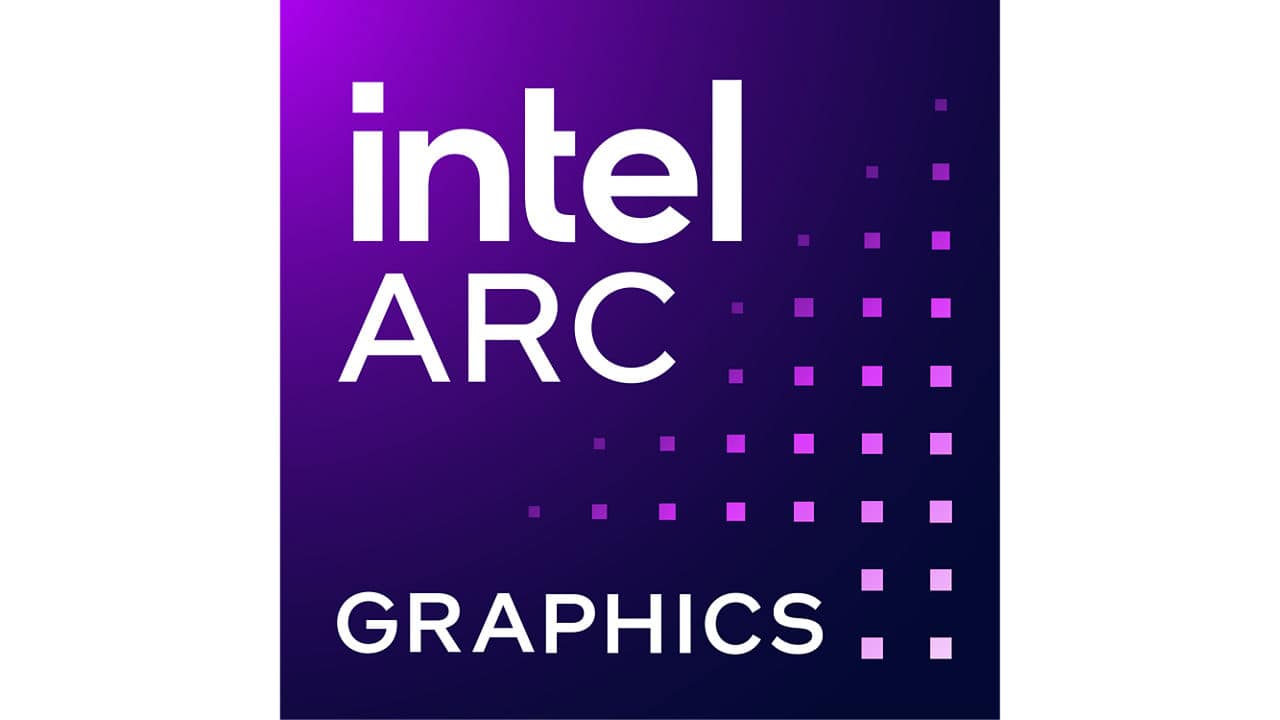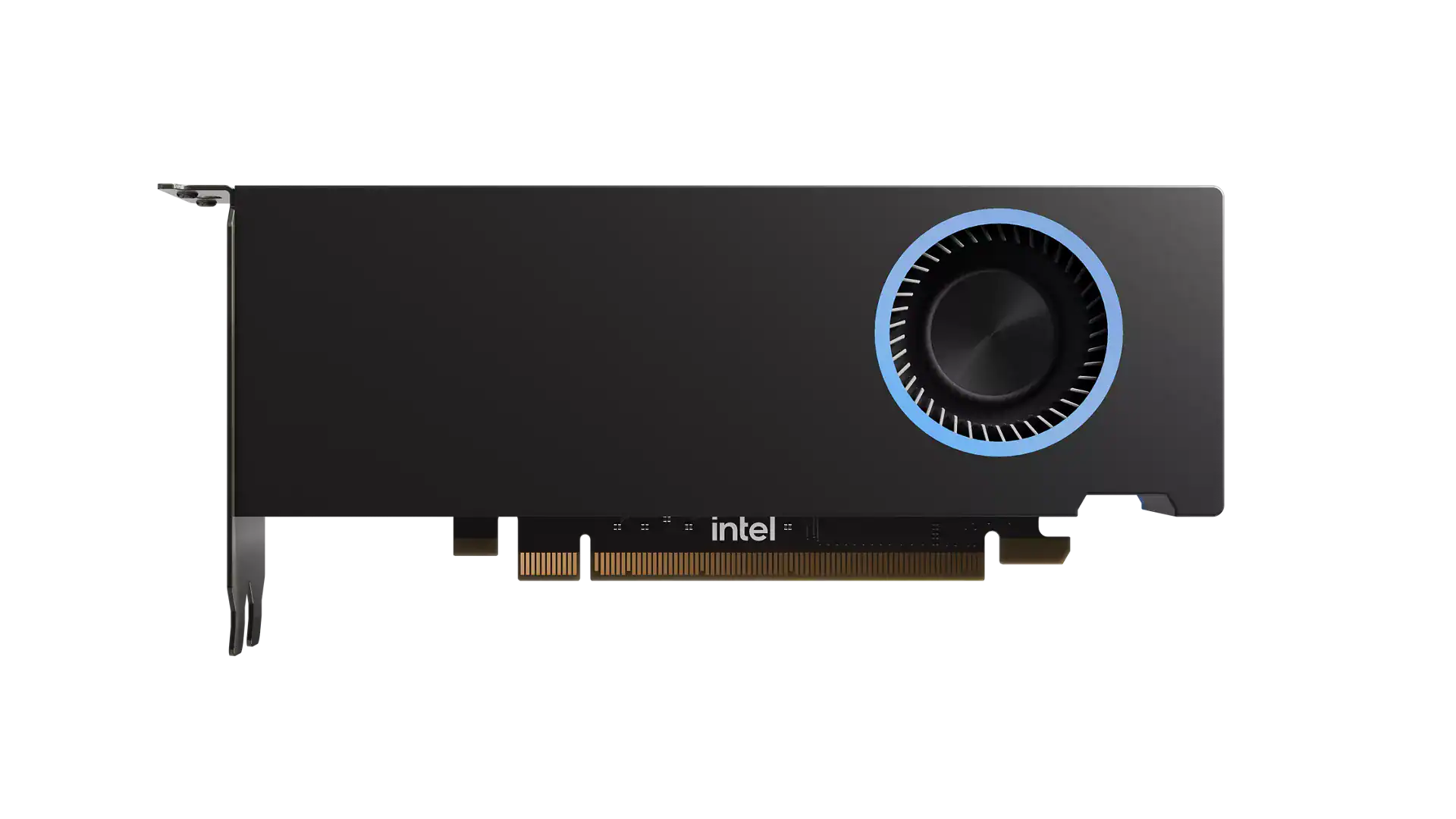At Computex 2025, Intel officially lifted the curtain on its Arc Pro B60 GPU, a new powerhouse designed to reshape the AI workstation landscape. With the second-gen “Battlemage” architecture at its core, the Arc Pro B60 offers an aggressive blend of performance, memory bandwidth, and value. But it’s not just a GPU launch—it’s the centerpiece of Intel’s broader push into scalable AI infrastructure through its new Project Battlematrix initiative.

A GPU Built for Real Work: Arc Pro B60 Specs & Highlights
The Arc Pro B60 isn’t just another graphics card—it’s a GPU engineered for professionals in AI, machine learning, scientific computing, and 3D visualization. It comes equipped with:
- 24GB of GDDR6 VRAM – enough to run large language models (LLMs) like Llama 3 (8B+) or image-based AI pipelines without hitting memory bottlenecks.
- 20 Xe2 Cores and 160 XMX AI Engines – offering up to 197 INT8 TOPS, placing it in serious contention against much pricier professional-grade GPUs from AMD and NVIDIA.
- 20 Ray Tracing Units – bringing real-time rendering and simulation capabilities to creators, engineers, and architectural designers.
- PCIe Gen 5 x8 Interface – high-bandwidth access to CPU memory and fast data movement for training and inference.
- 120W–200W Power Envelope – making it suitable for both compact workstations and high-end AI servers, depending on implementation.

Project Battlematrix: Intel’s Big Bet on AI Workstations
Intel isn’t just selling GPUs. With Project Battlematrix, it’s offering full-fledged, scalable inference platforms designed for enterprise AI workloads—without relying on the cloud.
Each Battlematrix system can host up to 8 Arc Pro B60 GPUs, delivering:
- 192GB of combined VRAM
- Up to 1,576 TOPS of INT8 performance
- On-premises compute for enterprises concerned with data privacy or rising API costs
The system is designed to support a wide range of open-source models like Llama 3, DeepSeek-R1, Stable Diffusion, and Mixtral, enabling users to run full inference pipelines locally. It’s Intel’s answer to the high subscription fees and privacy issues of proprietary cloud AI solutions.
A $500 Disruption: Pricing Strategy & Availability
In a market where GPUs with 24GB of VRAM typically sell well above $1,000, Intel’s Arc Pro B60 launch price of around $500 is turning heads. That aggressive pricing signals Intel’s commitment to undercut competitors in the professional GPU market.
- Sampling to partners begins in June 2025 (ASRock, Sparkle, Maxsun, Gunnir, Lanner, etc.)
- Full workstation availability is expected in Q3 2025
- Standalone GPU sales will follow in Q1 2026, ideal for professionals and builders looking to upgrade existing setups
Workstations with multiple B60 cards are projected to land in the $5,000–$10,000 range depending on configuration.
Partner Innovation: Dual-GPU Cards and Advanced Cooling
Intel’s board partners are already pushing the boundaries. Maxsun showcased a dual-GPU Arc Pro B60 48G Turbo, essentially two B60s fused into one monster card with 48GB of VRAM—ideal for high-end AI developers and researchers.
Sparkle is preparing multiple cooling configurations:
- Blower-style for traditional workstations
- Passive-cooled options for rackmount servers
- Liquid-cooled variants for high-performance, thermally constrained environments
This flexibility allows OEMs and system integrators to tailor solutions for studios, data centers, and AI labs.
Robust Software Support: A Full Stack for Developers
Intel is investing heavily in the Arc Pro B60 ecosystem:
- Baseline drivers for Windows and Linux available by July 2025
- Q3 2025 updates will add:
- Parallelism enhancements
- vLLM serving support
- GPU telemetry
- SR-IOV virtualization
- Q4 2025 will bring full features like:
- Passthrough virtualization
- XPU manager integration
- OneAPI and OpenVINO toolkit compatibility
This roadmap signals Intel’s aim to create not just fast hardware, but a complete, developer-ready AI platform.
Why It Matters
Intel’s Arc Pro B60 is more than a spec sheet—it’s a statement. After years of trailing NVIDIA in the AI space, Intel is mounting a comeback with a holistic offering that combines raw power, developer-friendly tools, and accessible pricing.
The Pro B60 and Project Battlematrix present a clear challenge to the status quo: powerful, local AI hardware that doesn’t break the bank or compromise privacy. For businesses and researchers alike, this could mark a turning point in how AI compute is deployed.
With the Arc Pro B60, Intel is no longer playing catch-up—they’re aiming to lead.
Best Gaming Graphics Cards for 2025
Choosing a gaming graphics card can be tough. Gamers have to consider their budget, screen resolution, and favorite games. The right graphics card will boost your gaming experience with smoother gameplay, better visuals, and faster frame rates.
Graphics cards update each year with new technology. The latest models from Nvidia and AMD offer improvements in speed and features. Both brands have options for different price points, from budget-friendly cards for casual gamers to high-end models for those who want top performance.
1. Nvidia RTX 5090
The Nvidia RTX 5090 is the most powerful graphics card in the current market. Released as the flagship model of the new 50-series, it offers incredible performance for gamers and creators alike.
Built on Nvidia’s new Blackwell architecture, the RTX 5090 delivers significant improvements over previous generations. It comes equipped with 32GB of super-fast GDDR7 memory, giving users plenty of headroom for demanding games and applications.
The card has a starting price of $1,999, placing it firmly in the premium segment. This high price point reflects its top-tier performance and advanced features.
Power requirements are significant for this graphics powerhouse. The RTX 5090 draws 575W of power and needs a massive 1000W power supply to run properly. Gamers need to ensure their systems can handle these demands.
The card’s design features a dark gun metal finish, giving it a premium look to match its performance. Nvidia has kept the same general styling as previous generations while improving cooling performance.
For gamers seeking the absolute best performance, the RTX 5090 delivers impressive frame rates at 4K resolution. It handles ray tracing effects with ease, creating stunning lighting and reflections in supported games.
Content creators benefit from the card’s massive memory and processing power. Video editing, 3D rendering, and AI tasks run much faster compared to previous generations.
The RTX 5090 is the first GPU that can consistently outperform the previous champion, the RTX 4090. This makes it the new benchmark for gaming graphics performance.
Availability might be limited at launch, as typically happens with new high-end graphics cards. Gamers interested in this card should watch retail channels closely.
For most gamers, the RTX 5090 provides more power than needed for current games. Lower-tier cards in the 50-series offer better value for typical gaming setups.
2. AMD Radeon RX 7900 GRE
The AMD Radeon RX 7900 GRE fits nicely between the 7800 XT and 7900 XT in AMD’s lineup. It sells for about $549, making it a strong mid-range option for gamers who want high performance without spending too much.
This card comes with 16 GB of GDDR6 memory, giving players plenty of room for today’s demanding games. The 7900 GRE uses AMD’s Navi 31 GPU, though it’s a lower-binned version compared to the more expensive cards in the series.
Several companies make their own versions of the 7900 GRE. Brands like Sapphire, ASUS, PowerColor, and ASRock offer different cooling solutions and designs.
The Sapphire Nitro+ model stands out as one of the best performing options, though it costs about $50 more than AMD’s suggested price. This extra cost gets you better cooling and possibly higher speeds.
Performance-wise, the 7900 GRE is roughly 10% faster than the 7800 XT. This matches its 10% higher price, giving gamers fair value for the upgrade.
The card features 80 unified AMD compute units, which help handle complex graphics in modern games. This power lets players enjoy games at max settings with smooth frame rates.
For gamers building a new PC, the 7900 GRE hits a sweet spot. It handles 1440p gaming with ease and can even tackle 4K in many titles.
Temperature control varies between models. Partner cards often improve on AMD’s reference design with better fans and heatsinks. This keeps the card running cooler during long gaming sessions.
Power requirements stay reasonable for a card of this class. Most good 650W or better power supplies will work fine with the 7900 GRE.
When looking at value, the 7900 GRE makes a strong case. It offers performance between the 7800 XT and 7900 XT with a price that matches this position in the lineup.
3. Nvidia RTX 5080
The Nvidia RTX 5080 has emerged as one of the top graphics cards for serious gamers in 2025. This powerful GPU offers impressive performance gains over previous generations, making it a strong choice for high-end gaming setups.
Released earlier this year, the RTX 5080 quickly earned praise from tech reviewers. PCMag even gave it their Editors’ Choice award, highlighting its exceptional gaming capabilities.
The card truly shines at 4K gaming. It handles Ultra-HD resolutions (3840 x 2160) with ease, even with ray tracing effects turned on. This means gamers can enjoy stunning visual details without sacrificing smooth gameplay.
One key improvement in the 5080 is its enhanced ray tracing performance. This technology creates more realistic lighting, shadows, and reflections in games. The jump from the 4000 series makes a big difference in games that use these effects.
Power efficiency has also improved. The 5080 delivers more frames per watt than its predecessors, meaning better performance without massive power draws or heat output.
Creative professionals will appreciate the RTX 5080 too. Nvidia designed it with AI-assisted creative workflows in mind. Video editors, 3D artists, and content creators can take advantage of its processing power.
The main challenge with the RTX 5080 isn’t its performance but its availability. As Polygon noted, the card has been in “extremely short supply” since launch. This scarcity has affected pricing as well.
Speaking of price, the RTX 5080 isn’t cheap. Models typically start around $1,399.99 for standard versions. Custom models from board partners can cost even more.
For gamers with older systems, the upgrade to an RTX 5080 would also likely require updates to the power supply and possibly the case for proper cooling. The card needs good airflow to perform at its best.
Despite these challenges, the RTX 5080 stands as one of the top gaming graphics cards of 2025. Its combination of raw power, ray tracing capabilities, and support for DLSS technology makes it future-proof for upcoming game titles.
4. Nvidia GeForce RTX 4070 Super
The RTX 4070 Super is one of Nvidia’s top gaming GPUs available in 2025. This card sits just behind the premium RTX 4090 in performance rankings while offering better value for most gamers.
The RTX 4070 Super starts at $549. It delivers excellent performance for 1440p gaming and can handle 4K gaming in many titles. It’s built on Nvidia’s Ada Lovelace architecture, which brings big improvements over previous generations.
Compared to the standard RTX 4070, the Super variant offers more CUDA cores and better overall performance. Many gamers find it roughly equal to the previous generation’s RTX 3080, but with newer features and better power efficiency.
Several manufacturers offer RTX 4070 Super cards with different cooling designs and clock speeds. The PNY XLR8 model is considered a solid choice with its triple-slot design for better cooling.
The card comes with 12GB of GDDR6X memory, which is enough for most modern games at high settings. This memory configuration helps maintain smooth gameplay even with detailed textures.
For gamers looking at Best Buy, several options are available including models from MSI, Gigabyte, and others that range around $629.99.
Ray tracing performance is a strong point for this card. The RTX 4070 Super handles light and shadow effects well, making games look more realistic without huge performance drops.
DLSS 3 technology is another benefit. It lets games run at higher frame rates through AI-powered upscaling. This feature helps maintain smooth gameplay even in demanding situations.
Power consumption remains reasonable for the performance level. Most systems with decent 650W power supplies can run this card without issues.
For 1440p gaming monitors, this card is nearly perfect. It pushes high frame rates even with settings maxed out in most games released up to 2025.
The RTX 4070 Super ranks as a top choice for gamers who want great performance without spending on the most expensive options like the 4080 or 4090.
5. AMD Radeon RX 9000 Series
AMD’s newest lineup of graphics cards has arrived with the Radeon RX 9000 Series. These cards run on the brand new RDNA 4 architecture, which helps them deliver faster performance than previous AMD cards.
The RX 9000 Series aims to please both casual and serious gamers. These cards handle modern games easily while keeping frame rates high and visuals sharp. They work especially well for people who want to game and stream at the same time.
XFX calls their RX 9070 model “the highest performance Radeon to date.” This shows how much AMD has improved their technology compared to older cards like the 7000 and 6000 series.
What makes these cards stand out is their focus on what gamers really need. The RX 9070XT brings together speed, performance, and great visuals. This mix helps create smooth gameplay that feels real and immersive.
AMD has also added AI features to these new cards. This isn’t just a buzzword – the AI helps boost performance in supported games and applications. The tech works behind the scenes to make your gaming experience better.
For memory, some models in the 9000 Series come with massive amounts of VRAM. There are even options with 32GB of memory, which helps with high-resolution gaming and future-proofs your system.
The RX 9000 cards represent a big step up if you’re using an older GPU. Players upgrading from past AMD or Nvidia cards will notice smoother gameplay and better graphics right away.
Price-wise, AMD typically offers good value compared to their competitors. The 9000 Series continues this tradition by packing powerful features at more accessible price points than similar performing cards from other brands.
Cooling has also improved with this generation. Better thermal design means the cards can run at high speeds without overheating, even during long gaming sessions.
6. Nvidia RTX 4070 Ti
The Nvidia RTX 4070 Ti stands as a powerful option for gamers seeking high performance without stepping up to the 4080 price tier. This graphics card offers excellent performance that typically matches or exceeds the previous generation’s RTX 3080.
Built on Nvidia’s Ada Lovelace architecture, the 4070 Ti comes equipped with 12GB of GDDR6X memory and a 192-bit memory interface. This hardware combination delivers strong frame rates at both 1440p and 4K resolutions.
For gamers playing at high settings, the RTX 4070 Ti offers higher framerates than its predecessors. It handles modern games with ease, making it a solid choice for those who want to play at ultra settings for the next few years.
The card launched with a price point of $799, positioning it as a premium but not top-tier option in Nvidia’s lineup. While not the best value in the entire 40-series family, it provides significant performance improvements over the 30-series equivalents.
Different manufacturers offer various models of the 4070 Ti, with companies like MSI creating versions with enhanced cooling systems and RGB lighting. The MSI Gaming GeForce RTX 4070 Ti is one such example, focusing on performance, cooling, and visual appeal.
Nvidia later released a “Super” version of this card in early 2024. The RTX 4070 Ti Super maintained the same $799 price point while offering better performance than the original model.
The card excels at ray tracing thanks to specialized RT cores. It also features DLSS 3 technology, which uses AI to boost frame rates in supported games without sacrificing visual quality.
Power consumption sits at a reasonable level compared to higher-end cards, making it easier to fit into existing PC builds without needing a power supply upgrade. Most models require an 8-pin or 12-pin power connector.
For 1440p gaming, the 4070 Ti delivers exceptional performance, easily hitting 100+ fps in most modern titles with settings maxed out. At 4K, it still performs well but may require some settings adjustments in the most demanding games.
When comparing price to performance, the 4070 Ti sits in a somewhat awkward position. The standard RTX 4070 offers better value for most gamers, while the 4070 Ti provides that extra performance boost for those who want more without stepping up to the much pricier 4080.
7. AMD Radeon RX 7600
The AMD Radeon RX 7600 stands out as a strong contender in the mid-range graphics card market. This card delivers excellent 1080p gaming performance, making it ideal for gamers who don’t need 4K capabilities.
Price-wise, the RX 7600 offers good value. It outperforms the more expensive RTX 3060 in many benchmarks, giving budget-conscious gamers more bang for their buck.
One of the newer features worth noting is the AI Frame Generation capability. This technology, similar to what’s found in pricier cards, helps boost frame rates in supported games for smoother gameplay experiences.
Not all RX 7600 cards are created equal, though. The Gigabyte Gaming OC version is often considered the top choice among the available models. It has one of the highest clock speeds in its class, giving it a slight edge in performance.
Many experts consider the Gigabyte variant to be the best RX 7600 option available, despite its price being slightly above the standard retail price. The performance boost justifies the small premium.
When compared to its direct competitor, the RTX 4060, the RX 7600 holds its own. Both cards feature 8GB of VRAM on a 128-bit interface, but they shine in different ways depending on the game and settings.
Memory can be a limiting factor for both cards. The 8GB VRAM might prove insufficient for some newer titles at higher settings, especially as games continue to demand more resources.
For gamers looking to play at 1080p with high frame rates, the RX 7600 delivers solid performance. It can even handle some games at 1440p, though results may vary depending on the title and graphics settings.
Power efficiency is another plus for this card. It doesn’t require an overly powerful power supply, making it a good option for upgrading older systems without needing to replace multiple components.
Heat management varies between different manufacturers’ versions of the RX 7600. The better cooling solutions found on premium models help maintain higher boost clocks during extended gaming sessions.
8. Nvidia GeForce RTX 3090 Ti
The Nvidia GeForce RTX 3090 Ti is a powerhouse in the graphics card market. It comes with 24GB of GDDR6X memory, making it perfect for both gaming and creative work.
This card offers TITAN class performance that serious gamers and content creators seek. The massive memory helps it handle the most demanding games and applications with ease.
Gamers love this card for its smooth performance. It runs games at high frame rates even with the settings maxed out. The RTX 3090 Ti also handles 4K gaming without breaking a sweat.
Most versions of the card will perform similarly. As noted by users on Reddit, “a 3090 Ti will perform like a 3090 Ti” unless you’re specifically looking to break benchmark records.
For those wanting the best variant, the Asus ROG Strix LC GeForce RTX 3090 Ti OC Edition stands out. PCMag lists this as Asus’ best offering in the 3090 Ti lineup.
The card’s design also gets high marks from users. Many appreciate the titanium and black aesthetic of the Founders Edition model.
Graphics quality is another strong point. Players report stunningly realistic visuals in their games. The RTX 3090 Ti takes full advantage of ray tracing technology to create lifelike lighting effects.
The main drawback is timing. The 3090 Ti launched near the end of its generation’s cycle. Some users have pointed out that buying one means investing in end-of-generation technology when newer options might soon be available.
Heat management is another consideration. Due to its power, the card runs hot and needs good cooling. Many premium models include enhanced cooling solutions to address this issue.
Power requirements are substantial. Users need a strong power supply unit to run this card properly. Most manufacturers recommend at least an 850W PSU for systems using the RTX 3090 Ti.
Price remains a significant factor. This graphics card sits at the high end of the market. Gamers must decide if the premium performance justifies the premium price tag.
9. Nvidia RTX 5070 Ti
The Nvidia RTX 5070 Ti is one of the newest additions to Nvidia’s graphics card lineup. Released in early 2025, this GPU is built on the advanced Blackwell architecture and offers significant improvements over previous generations.
Performance-wise, the RTX 5070 Ti excels particularly in 1440p gaming scenarios. It also handles high-refresh-rate 1080p gaming with ease, making it a solid choice for competitive gamers who need smooth frame rates.
Compared to its predecessor, the RTX 4070 Ti Super, the 5070 Ti shows modest gains. Tests reveal performance improvements ranging from 2.2% to 20%, with most games seeing about 12-16% better performance at higher resolutions.
The card comes equipped with 16GB of GDDR7 memory. This generous memory allocation helps future-proof the card for upcoming game releases that may demand more VRAM.
Several manufacturers offer their versions of the RTX 5070 Ti. ASUS, for example, produces the PRIME-RTX5070TI-16G model, which features the full 16GB memory specification.
AI capabilities stand out as a key selling point for this graphics card. The RTX 5070 Ti leverages Nvidia’s AI technology to enhance gaming performance through features like DLSS 3.5, which uses AI to generate frames and increase fps counts.
Power consumption has been improved over the previous generation. The card draws less power while delivering better performance, making it more energy-efficient for long gaming sessions.
Price remains a sticking point for many potential buyers. Some reviewers have noted that the RTX 5070 Ti suffers from excessive launch pricing, which may affect its value proposition despite its technical prowess.
For gamers focused on 1440p resolution, the RTX 5070 Ti hits a sweet spot. It delivers enough power to run most modern games at high to ultra settings while maintaining smooth frame rates.
Ray tracing performance has seen notable improvements with this generation. Games featuring ray-traced lighting, shadows, and reflections run more smoothly than on previous-gen cards.
The RTX 5070 Ti represents a well-balanced GPU option in Nvidia’s lineup, sitting between the more affordable 5060 models and the premium 5080 and 5090 cards.
10. AMD Radeon RX 9070
The AMD Radeon RX 9070 has arrived as a strong contender in the mid-range gaming GPU market. Released as part of AMD’s RDNA 4 architecture lineup, this card offers impressive performance without breaking the bank.
Power efficiency stands out as one of the RX 9070’s best features. Many users compare it to the older 5700 XT in terms of power consumption while delivering much better performance. This makes it a good choice for gamers concerned about electricity usage and heat output.
The standard RX 9070 sits just below its sibling, the RX 9070 XT, in AMD’s lineup. The price difference between the two models makes the base 9070 an attractive option for budget-conscious gamers who still want great 1440p gaming performance.
For 1080p gaming, the RX 9070 handles most modern titles with ease. It can push high frame rates in competitive games and maintain smooth performance in graphically demanding titles at this resolution.
Moving up to 1440p resolution, the card continues to perform well. Most AAA games run at comfortable frame rates with high settings, though some adjustments might be needed in the most demanding titles.
Ray tracing performance has improved compared to previous AMD generations. While not quite matching NVIDIA’s implementation, the RX 9070 can handle ray-traced games at reasonable settings without crippling performance.
Several manufacturers offer custom versions of the RX 9070. Popular models include offerings from Asus, Gigabyte, PowerColor, and Sapphire, each with unique cooling solutions and slight performance tweaks.
The AMD Radeon RX 9070 comes with AI-enhanced features aimed at improving gaming experiences. These features help boost frame rates in supported games and enhance visual quality.
When compared to NVIDIA’s RTX 5070, the RX 9070 typically offers similar performance at a more competitive price point. This value proposition makes it worth considering for many gamers.
Temperature management is another strength of the RX 9070. Most models run cool under load with their stock cooling solutions, leaving room for overclocking if desired.
For gamers building a new PC or upgrading from older hardware, the RX 9070 hits a sweet spot of performance, efficiency, and price. It handles today’s games well while providing enough power to stay relevant for years to come.
Understanding Graphics Cards
Graphics cards are the powerhouse components that determine how well your PC handles games and visual tasks. These specialized pieces of hardware process and render images, animations, and video content that appear on your monitor.
Key Components of Graphics Cards
The GPU (Graphics Processing Unit) is the main chip on a graphics card. It handles all the complex math needed for rendering graphics. Modern GPUs contain thousands of small cores working together.
The VRAM (Video Random Access Memory) stores image data that the GPU needs to access quickly. More VRAM lets you play games at higher resolutions and with better textures. Today’s cards offer between 4GB to 24GB of VRAM, with high-end models like the RTX 4090 featuring the most memory.
Cooling systems prevent overheating during intense gaming sessions. These include heatsinks, fans, and sometimes liquid cooling.
The PCIe interface connects the graphics card to your motherboard, allowing data transfer between components.
Integrated vs. Dedicated Graphics Cards
Integrated graphics are built into your CPU. They share system memory instead of having their own VRAM. These are suitable for basic tasks and light gaming but struggle with demanding games.
Dedicated graphics cards are separate components with their own processor and memory. They offer much better performance for gaming and professional applications.
Entry-level dedicated cards like the AMD Radeon RX 7600 handle 1080p gaming well. Mid-range options provide good 1440p performance at reasonable prices.
High-end cards like the Nvidia GeForce RTX 5090 can run games at 4K resolution with all settings maxed out. The sweet spot for most gamers is typically the “60” series from Nvidia, balancing performance and price.
Factors Influencing Graphics Card Performance
Graphics card performance depends on several key elements that work together to deliver smooth gaming experiences. The hardware design and memory specifications directly impact how well a GPU handles modern games and applications.
GPU Architecture and Design
The core architecture of a graphics card determines its raw processing power. Modern GPUs contain thousands of cores that handle calculations in parallel. NVIDIA’s RTX 4000 series and AMD’s RX 7000 series use different architectural approaches to achieve high performance.
Competition between manufacturers drives innovation in GPU design. Each new generation typically offers 20-30% performance improvements over previous models.
Clock speeds matter significantly. A GPU running at higher frequencies can process more information per second. Base and boost clock rates (measured in MHz) directly affect gaming performance.
Power efficiency has become increasingly important. Cards that manage heat better can maintain higher performance for longer gaming sessions without throttling.
Memory Type and Capacity
VRAM capacity is crucial for gaming at higher resolutions. 4K gaming typically requires at least 8GB of VRAM, while 1080p gaming can function with 4-6GB.
Memory bandwidth affects how quickly data moves between the GPU and its memory. Cards with wider memory buses and faster GDDR6 or GDDR6X memory provide better performance in texture-heavy games.
Memory technology evolves with each generation. The jump from GDDR5 to GDDR6 brought significant bandwidth improvements, while newer GDDR6X offers even faster data transfer rates.
Cache size also impacts performance. Larger L2 and L3 caches help reduce memory latency by keeping frequently accessed data closer to the processing cores.
Optimizing Gaming Experience with Graphics Cards
Getting the most from your graphics card involves more than just installation. Proper setup and maintenance can significantly boost performance and extend your card’s lifespan.
Ensuring Compatibility with Other Hardware
Your graphics card must work well with your other PC components. The most critical factor is your power supply unit (PSU). High-performance gaming cards like the RTX 5090 need at least 850W PSUs with proper power connectors.
CPU compatibility matters too. Pairing a powerful GPU with a weak CPU creates a bottleneck that wastes your card’s potential. For example, an RTX 3070 works best with at least a 10th-gen Intel i7 or AMD Ryzen 5000 series.
Monitor compatibility affects your experience directly. A 4K-capable RTX 4090 is wasted on a 1080p display. Match your GPU to your monitor’s resolution:
- 1080p gaming: RTX 3060 or RX 6600
- 1440p gaming: RTX 4070 or RX 7800 XT
- 4K gaming: RTX 4080/4090 or RX 7900 XTX
Overclocking and Cooling Solutions
Overclocking pushes your graphics card beyond factory settings for extra performance. Modern GPUs like the RTX series have user-friendly overclocking tools. Start with small 5% increases to core and memory clocks while testing stability.
Proper cooling becomes essential when overclocking. Aftermarket cooling options include:
Air Cooling Upgrades:
- Custom fan profiles (free via software)
- Replacing thermal paste (every 1-2 years)
- Aftermarket GPU coolers ($30-100)
Advanced Cooling:
- Custom water cooling loops ($200-500)
- All-in-one GPU water coolers ($120-300)
Case airflow significantly impacts GPU temperatures. Ensure your case has at least two intake and one exhaust fan. Keep your case dust-free with monthly cleaning. High temperatures above 85°C can damage your card and cause crashes or reduced performance.
Frequently Asked Questions
Gamers looking for new graphics cards often have specific questions about performance, value, and future-proofing their systems. The latest GPU models offer various benefits depending on your gaming needs and budget.
What are the performance benchmarks for the leading gaming GPUs currently available?
The Nvidia GeForce RTX 5090 dominates current benchmarks with unmatched performance. It delivers over 30% better frame rates than previous generation cards in most AAA titles.
The AMD Radeon RX 9000 Series competes well, particularly in rasterization performance, though it falls slightly behind in ray tracing workloads.
For 4K gaming, the RTX 5090 maintains 120+ fps in most modern games, while the RTX 5080 typically achieves 90-110 fps at similar settings.
How does the top-of-the-line graphics card compare in terms of value for money?
Premium cards like the RTX 5090 offer extreme performance but at diminishing returns per dollar spent. They cost 80-100% more than mid-tier options while delivering only 30-40% better performance.
The AMD Radeon RX 7900 GRE provides excellent value in the high-end segment. It offers about 85% of flagship performance at roughly 60% of the price.
Mid-range options like the RTX 4070 Super hit the sweet spot for many gamers, balancing strong performance with reasonable cost.
What are the recommended graphics cards for high-end gaming at 4K resolution?
The RTX 5090 stands as the ultimate 4K gaming card. It handles 4K gaming at maximum settings with ray tracing enabled while maintaining 100+ fps in most titles.
The RTX 5080 offers strong 4K performance at a lower price point. It manages 60+ fps in nearly all modern games at high to ultra settings.
AMD’s top RX 9000 Series cards compete well for 4K gaming, especially in games that don’t heavily rely on ray tracing features.
Which budget GPUs provide the best frame rates for 1080p gaming?
Lower-tier RTX 40-series cards deliver excellent 1080p performance. The RTX 4060 handles most games at high settings with 100+ fps at Full HD resolution.
AMD offers competitive budget options that often provide better raw performance per dollar at 1080p resolution.
For esports titles, even budget cards can achieve the 144+ fps needed for competitive play at 1080p with optimized settings.
What are the most energy-efficient graphics cards for environmentally conscious gamers?
The newer RTX 50-series cards show improved efficiency over previous generations. They deliver more performance per watt than their predecessors.
AMD’s RDNA 3 and 4 architectures have made significant strides in power efficiency. Some models use up to 20% less power while maintaining similar performance levels.
Mid-range cards typically offer the best balance of performance and power consumption, with the RTX 4070 Super being particularly efficient.
What graphics cards do experts predict to remain future-proof for the next several years?
Cards with 16GB+ VRAM like high-end AMD models and the RTX 5090 will likely stay relevant longer as games require more memory. This extra VRAM buffer helps with texture-heavy games and higher resolutions.
The RTX 50-series cards have advanced AI upscaling technology. This technology can extend usefulness by enhancing performance in future games through software improvements.
High-end current-generation cards should handle 1440p gaming well for at least 3-4 years before demanding significant settings compromises in newer titles.







